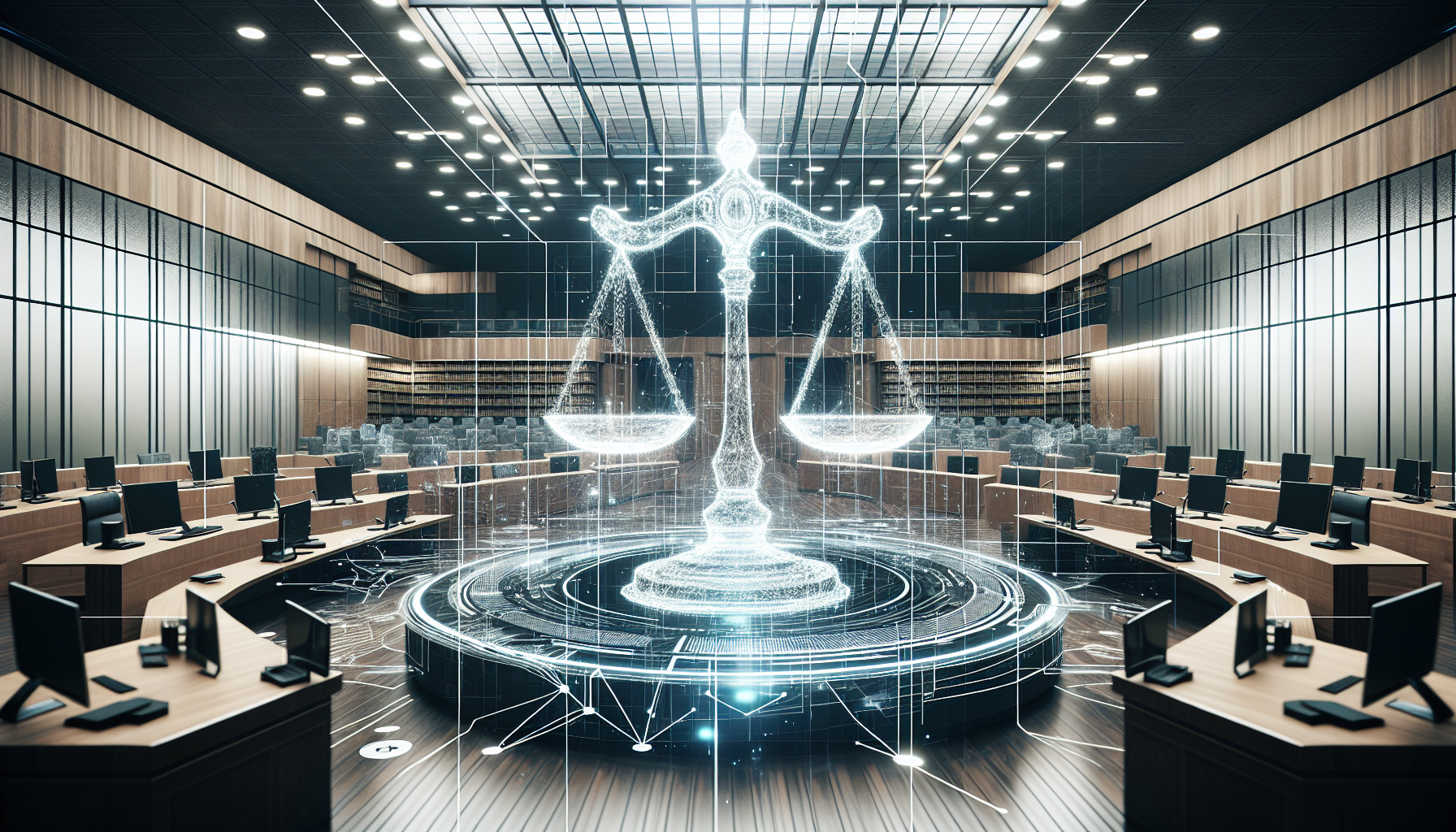
Streamlining Your Workflow: The Promise of ChatGPT in Legal Work
Paralegals and legal professionals often encounter numerous challenges when handling paternity case documentation, from managing extensive paperwork to ensuring accuracy in pleadings and affidavits. These tasks are not only time-consuming but also demand meticulous attention to detail. Fortunately, advancements in artificial intelligence, specifically language models like ChatGPT, bring a beacon of promise to this arena. ChatGPT, powered by OpenAI, has shown incredible potential to transform and simplify the complexities involved in legal documentation, offering paralegals a smarter way to manage their workload efficiently.
ChatGPT and other large language models (LLMs) could revolutionize how legal documents are drafted, reviewed, and processed. These models can generate human-like text based on provided prompts, ensuring that legal professionals can streamline documentation with enhanced speed and precision. Integrating such AI solutions into daily legal practices promises to reduce errors, cut down on time spent, and alleviate the routine strain on paralegals.
Setting Up for Success: Integrating ChatGPT into Your Legal Toolkit
To leverage ChatGPT effectively, a strategic setup is crucial. Get started by familiarizing yourself with the basic functionalities of ChatGPT. Platforms like OpenAI’s API offer easy access to the model, which can be integrated into your daily workflows with minimal fuss. For a seamless experience, consider utilizing user-friendly interfaces such as OpenAI’s Playground or delegate integration to tech professionals who can embed the API directly into your firm’s software.
Most importantly, ensure that your team understands how to effectively use these tools. Training sessions and webinars can be resourceful in equipping your paralegals with the necessary skills to harness the full potency of ChatGPT. By setting up correctly, you lay the foundation for a streamlined workflow.
Also read:
Crafting the Perfect Prompt: Leveraging Nuanced Queries for Optimal Output
Fine-tuning the input prompt is critical to getting the most valuable output from ChatGPT. A well-crafted prompt can mean the difference between an accurate legal document and a vague response. Precision, context, and detail are key. For example, instead of a general prompt like “Draft a petition,” a more effective prompt would be: “Draft a petition to establish paternity for a case in the state of California, including sections on legal grounds, supporting evidence, and requested relief.”
Consider the following nuanced prompts:
- Affidavit Drafting: “Create an affidavit in support of a paternity case involving John Doe and Jane Smith, highlighting key details from the attached DNA test results and witness statements.”
- Legal Notices: “Draft a legal notice to inform the respondent about the paternity hearing scheduled on [date], including venue details and required documents.”
By incorporating specific facts, legal jargon, and necessary context, you ensure that ChatGPT outputs a draft that closely matches your requirements, reducing the need for extensive revisions.
Also read:
Mastering Document Drafting: Speeding Up Paternity Case Filings
When it comes to drafting paternity case documents, ChatGPT can be an invaluable ally. Whether creating initial petitions, supporting affidavits, or legal notices, the goal is to strike a balance between comprehensive detail and procedural brevity.
Petitions:
Start by providing a detailed prompt that includes the necessary legal basis and background context. For instance: “Draft a petition to establish paternity for a resident of Texas, including sections on legal grounds, details of the child’s birth, the parties involved, evidence supporting the paternity claim, and the relief sought, such as child support and custody.” This ensures the generated content is robust and legally sound.
Affidavits:
When drafting affidavits, specificity in the prompt is key. An example might be: “Create an affidavit for Mary Johnson, outlining her observations that relate to the paternity case involving her brother, John Doe. Focus on key dates, events witnessed, and any corroborating evidence such as photographs or recorded conversations.”
Legal Notices:
For legal notices, clarity and completeness are paramount. A sample prompt could be: “Draft a legal notice for the respondent, Michael Smith, notifying him of the paternity hearing scheduled for March 3, 2023, at the Lincoln County Courthouse, including a list of documents he must bring and possible consequences of non-appearance.”
Using ChatGPT for these tasks not only accelerates the drafting process but also helps maintain consistency and legal compliance across documents.
Also read:
Data Extraction and Summarization: Simplifying Complex Information
ChatGPT’s capability for data extraction and summarization makes it an essential tool for dealing with voluminous case files and evidence. By providing it with comprehensive prompts, it can sift through extensive documents and distill crucial information into digestible summaries.
- Document Summarization: “Summarize the key points from this 20-page deposition of Jane Doe, focusing on statements relevant to her relationship with the child’s alleged father.”
- Data Extraction: “Extract all dates and events from this document that are pertinent to the paternity case involving John Doe.”
These prompts ensure that the critical facts are at your fingertips, simplifying the preparation of legal arguments and case briefs.
Also read:
Enhancing Accuracy: Cross-Verification and Fact-Checking with ChatGPT
Ensuring the accuracy of legal documents is paramount. ChatGPT can assist in cross-verifying information, reducing the potential for errors. By asking ChatGPT to fact-check specific details, paralegals can maintain the integrity of their documents.
- Cross-Verification Prompt: “Verify the accuracy of the following dates and events mentioned in this affidavit with the information provided in the case file.”
- Fact-Checking Prompt: “Check the factual correctness of the claims made in this petition, particularly regarding the birth date and location of the child.”
These strategically designed prompts enable paralegals to uphold the highest standards in legal documentation through AI-assisted verifications.
Also read:
Effective Communication: Drafting Emails and Client Correspondence
Communicating effectively with clients and stakeholders is crucial in legal practice, and ChatGPT is an asset here as well. It can help craft clear, professional, and contextually appropriate emails and correspondence.
- Client Update: “Draft an email updating our client, John Doe, on the current status of his paternity case, including the date of the next hearing and any required documents.”
- Stakeholder Coordination: “Compose an email to inform the opposing counsel about our proposed deposition dates and request their availability.”
Employing ChatGPT for these tasks ensures that communications are prompt, precise, and aligned with professional standards.
Also read:
Ethical Considerations and Best Practices
While AI-powered tools like ChatGPT offer numerous advantages, legal professionals must navigate ethical considerations carefully. Confidentiality, compliance with legal standards, and the ethical use of AI are paramount.
- Always double-check the AI-generated content for accuracy and legal compliance.
- Ensure that any sensitive information processed by AI is securely managed to maintain client confidentiality.
- Stay informed about the ethical guidelines for AI usage in legal practice.
Adopting best practices ensures that the integration of AI tools aligns with the ethical standards of legal practice.
Also read:
Continual Improvement: Keeping Up with AI Capabilities
The legal field, like AI technology, is continually evolving. Staying updated with the latest developments in AI capabilities can enhance your adoption of these tools.
Engage with resources such as legal technology blogs, webinars, and AI user communities to keep abreast of new features and best practices. By continuously improving your knowledge and skills, you can maximize the benefits of AI in your legal workflows.
Also read:
Closing Thoughts: Embracing Technology for Efficiency and Excellence
In conclusion, utilizing ChatGPT offers significant potential to revolutionize paternity case documentation and filings. By integrating these tools, crafting precise prompts, and following best practices for ethical use, legal professionals can achieve higher efficiency and accuracy in their work.
Embrace the power of AI with a proactive approach, and pave the way for a more productive and advanced future in legal practice.


